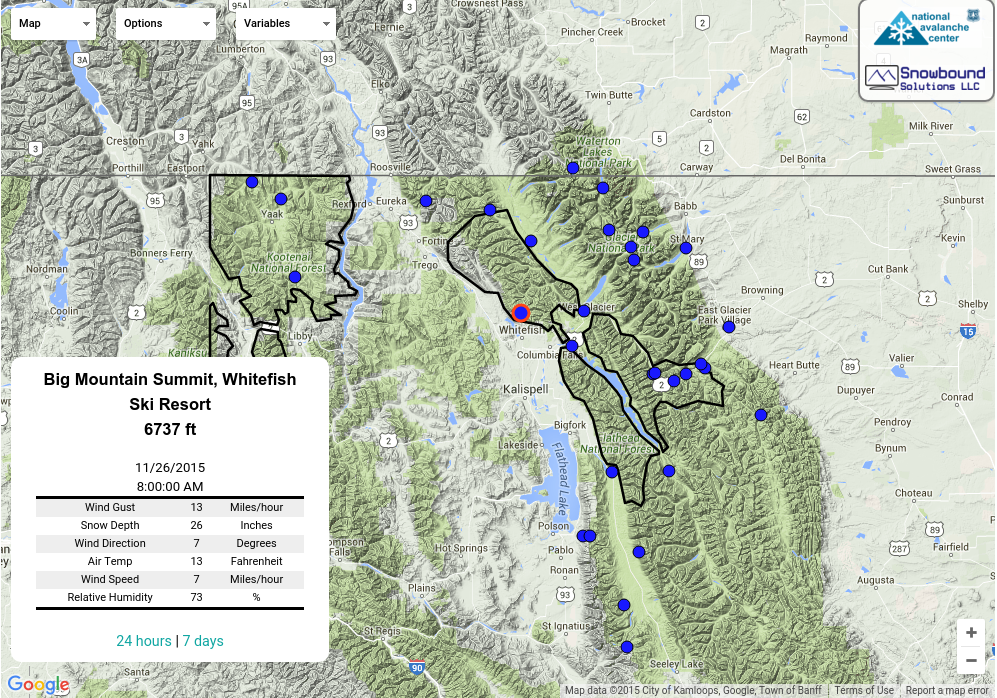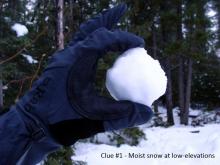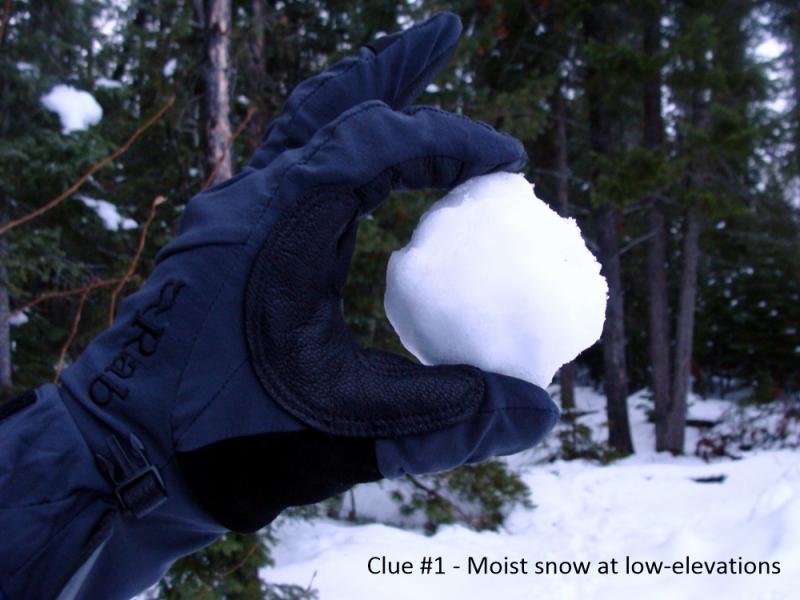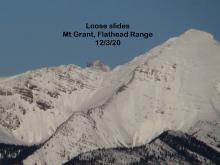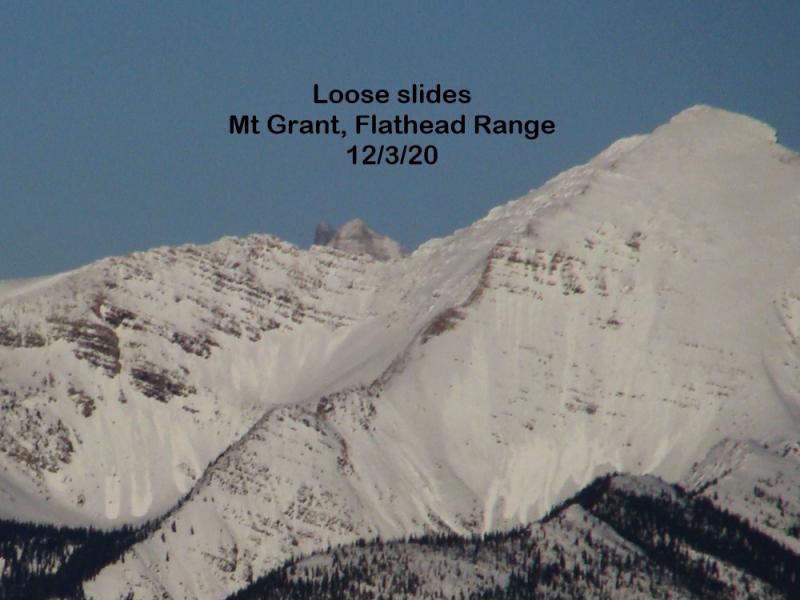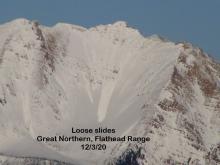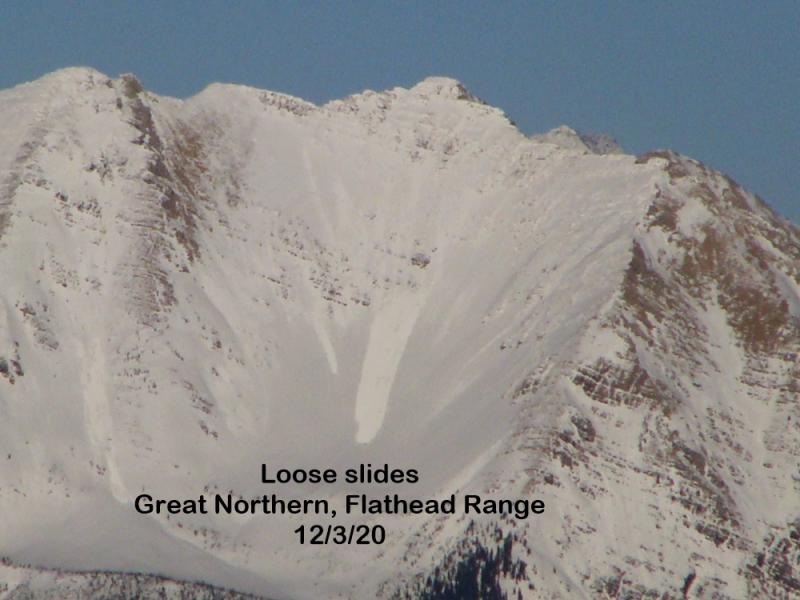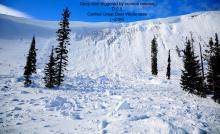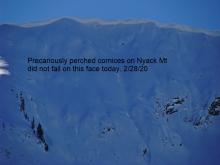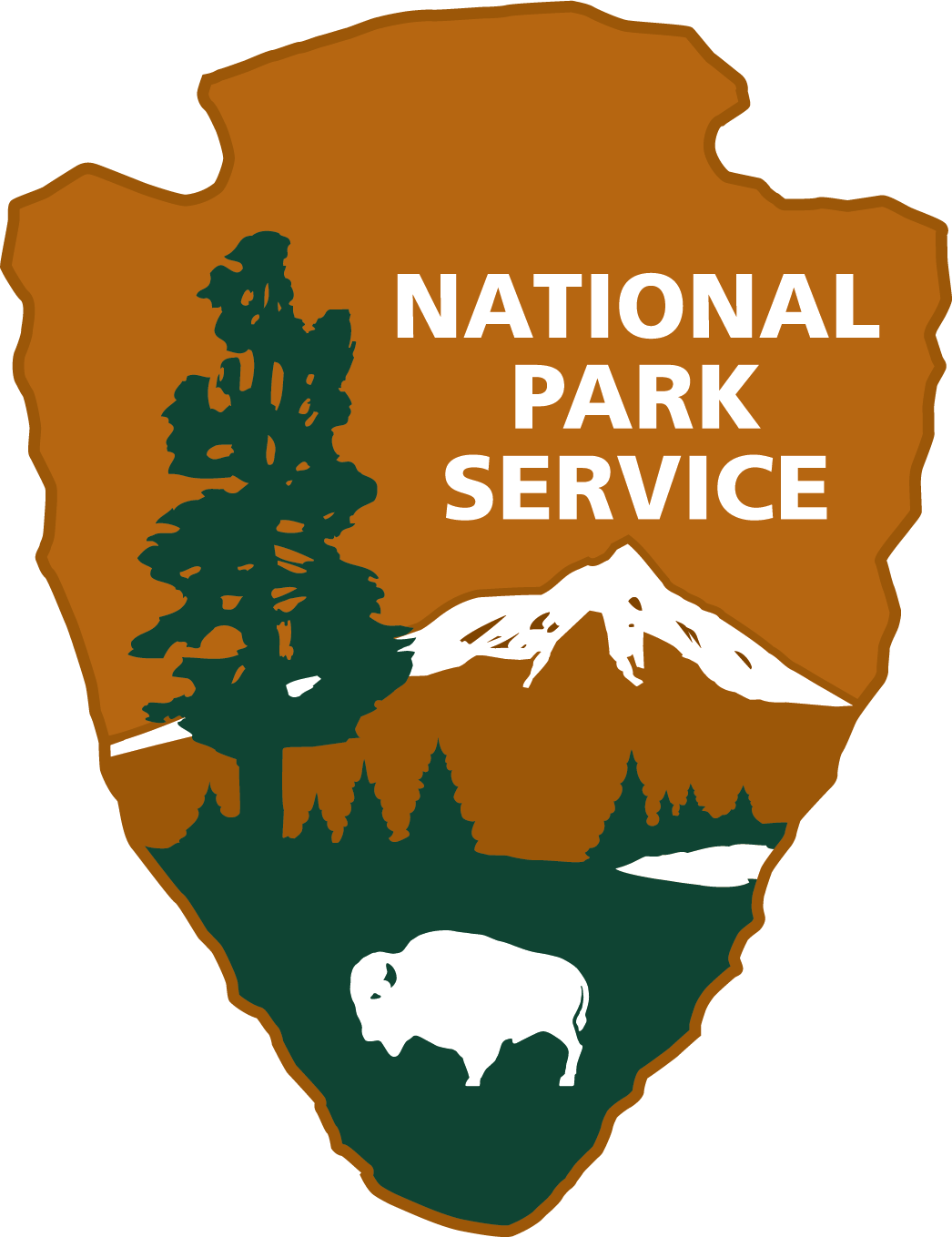| Sunday | Sunday Night | Monday | |
|---|---|---|---|
| Cloud Cover: | Scattered showers with breezy conditions. | Light to moderate snow and cool temperatures. | Light snow with cool temperatures. |
| Temperatures: | 33-52 deg. F. | 14-23 deg. F. | 27-41 deg. F. |
| Wind Direction: | Southwest | West | West-northwest |
| Wind Speed: | 10-12 gusts to 29 | 7-11 gusts to 28 | 4-6 |
| Snowfall: | 0-3 in. | 2-5 in. | 1-3 in. |
| Snow Line: |
Whitefish Range
Swan Range
Flathead Range and Glacier National Park
How to read the forecast
Today's cloudy cool conditions will minimize natural loose wet avalanche activity but there remains a chance to trigger one of these slides. At upper elevations a thin surface crust caps a layer of unconsolidated snow. At low elevations the surface crust is unsupportable or non-existent. The avalanche danger is LOW. Pay attention to changing snow surface conditions and avoid consequential terrain if you or your machine start to sink below the snow surface into moist unconsolidated snow.
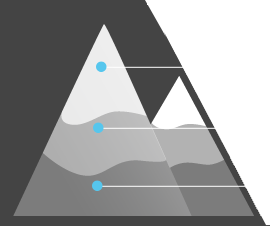
1. Low
?
Above 6500 ft.
1. Low
?
5000-6500 ft.
1. Low
?
3500-5000 ft.
- 1. Low
- 2. Moderate
- 3. Considerable
- 4. High
- 5. Extreme
-
Type ?
-
Aspect/Elevation ?

-
Likelihood ?CertainVery LikelyLikelyPossible
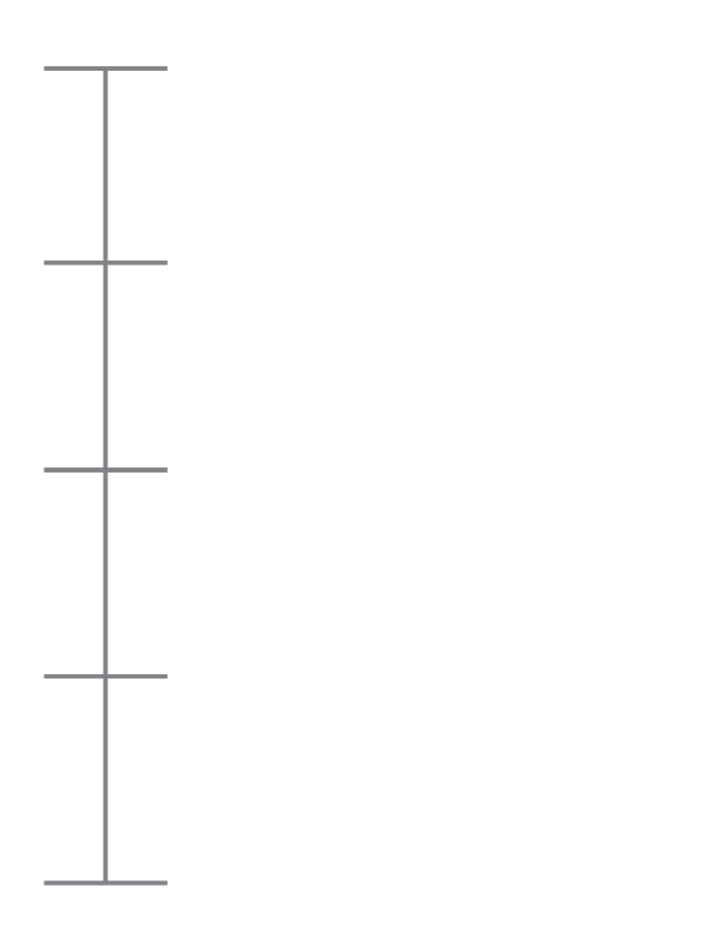 Unlikely
Unlikely -
Size ?HistoricVery LargeLargeSmall

At upper elevation locations a thin surface crust exists which caps a layer of loose snow up to a foot thick. This crust is thickest on sunny aspects and thinner on more shaded slopes. Today's concern at this elevation is breaking through the crust and triggering the moist unconsolidated snow underneath. At low elevations warm daytime temperatures and above freezing overnight temperatures have resulted in a mostly moist loose surface. If there is a surface crust it will be quite thin and unsupportable. On steep slopes it is still possible to trigger a loose wet avalanche in this moist snow. The mid elevation band seems to be the transition zone from a thin, or non existent crust, to a supportable crust. Cooler cloudy conditions today will minimize the natural loose wet avalanche problem but there remains a chance that you could trigger one of these slides. Avoid consequential terrain as a small loose wet avalanche could knock you off your feet or machine and push you into trees, over a cliff or deposit you into a gully.
-
Type ?
-
Aspect/Elevation ?
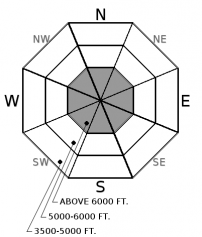
-
Likelihood ?CertainVery LikelyLikelyPossible
 Unlikely
Unlikely -
Size ?HistoricVery LargeLargeSmall

Massive cornices exist along many of the ridgelines across the advisory area. With longer days resulting in warmer temperatures and more hours above freezing these features are continuing their weakening trend. It's important to pay attention to what is suspended above you as you travel on slopes below ridgelines. Give these features a wide berth while traveling along ridge lines as they can pull out further back than expected, even behind the solid ground. When a large cornice falls it has the potential to trigger deep instabilities that would otherwise remain dormant resulting in a large avalanche.
With the fickle and often surprising weather events that spring in northwest Montana brings it's important to pay attention to prolonged warm and sunny conditions or heavy rain that could weaken deep layers again.
Glide cracks have also been observed opening up in many locations. The first reported glide avalanche this season was March 25 and occurred west of the WMR ski area in the southern Whitefish Range. There is a large amount of uncertainty associated with glide avalanches, so the best way to manage them is to avoid slopes where they are present.
The last daily avalanche advisory of the season will be Sunday, April 9.
Saturday: Skiers in the Crystal Creek/Cascadilla Creek area of the Flathead Range noted no surface crust in the trees at low elevations, but there was a supportable crust above 5500 feet. No natural loose wet avalanche activity or rollerballs were observed during their tour.
Friday: FAC staff toured in the Blaine Mountain area of the northern Swan Range where they found up to 14" of recent snow sitting on top of the mid March rain crust. Warm temperatures and sunshine warmed and moistened the new snow and created rollerballs and loose wet slides.
See below for all observations this season.
Yesterday, we saw partly cloudy conditions, seasonal temperatures slightly above freezing and breezy conditions. Currently, mountain temperatures are 27-35º F and winds are 5-19 mph gusting to 28 mph out of the southwest. Today expect partly to mostly cloudy conditions, temperatures in the low to upper 30s with scattered light showers and continued breezy conditions. Increasing precipitation is expected tonight into tomorrow.
| 0600 temperature: | 27-35 deg. F. |
| Max. temperature in the last 24 hours: | 33-42 deg. F. |
| Average wind direction during the last 24 hours: | Southwest |
| Average wind speed during the last 24 hours: | 5-31 mph |
| Maximum wind gust in the last 24 hours: | 22-45 mph |
| New snowfall in the last 24 hours: | 0 inches |
| Total snow depth: | 83-120 inches |
This advisory applies only to backcountry areas outside established ski area boundaries. This advisory describes general avalanche conditions and local variations always occur. This advisory expires at midnight on the posted day unless otherwise noted. The information in this advisory is provided by the USDA Forest Service who is solely responsible for its content.

